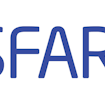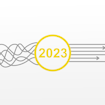
As noted in our blog post earlier this year, the SFARI science team has recently evaluated the success of our current request for applications (RFA) funding mechanisms and revamped these open calls for scientific proposals to maximize our support of ground-breaking autism research.
Why?
Scientific pursuits come in many forms. Sometimes it is a completely novel hypothesis that could be transformative. Other times, it is a long-held hypothesis in the field that needs resolution but hasn’t been properly investigated. Such varied science requires flexible funding mechanisms tailored to the potential promise and uncertainty of each project.
We hope that the changes described below will help us to improve the selection and support of such diverse science in service of our broader mission: to improve the understanding, diagnosis and treatment of autism spectrum disorders by funding innovative research of the highest quality and relevance. These changes will enhance our ability to support diverse scientific disciplines within a broader framework that emphasizes connecting genes to molecular mechanisms to neural circuits to behavior and to therapeutic interventions. For thoughts on this framework and how it affects our decision-making process, we encourage you to visit our scientific perspectives page.
What?
Revamping our grant mechanisms
Over the years, we have often been asked, “What’s the difference between an Explorer Award and a Pilot Award?” Yes, the budgets, review processes and grant periods were different but at their core, they served the same goal: to seed conceptually novel, high-risk/potentially high-reward proposals. In practice, we found that the one-year Explorer Award frequently did not provide enough time or money for a researcher to make substantial progress on answering the questions they posed in their specific aims. At the other end, because Pilot and Research Award proposals were reviewed together as part of our annual call for applications, Pilot proposals were sometimes judged with the same criteria as the more mature Research proposals, thereby tending to favor proposals that were essentially mini-Research Award projects rather than truly exploratory projects.
To address these issues, we’ve decided to end our Explorer Award program and to split our annual RFA into three solicitations per academic year. The hope is that these changes will realign our RFA funding mechanisms and associated processes to better reflect two distinct goals:
- seeding exploratory hypotheses
- substantial support for high-priority topics
We also hope that these changes have a positive impact on the expectations for funded projects and how we evaluate success or failure at the end of the grant period.
Here is the breakdown by grant mechanism:
Pilot Award
The goal of the Pilot Award is to provide early support for exploratory ideas, particularly those with novel hypotheses. Pilot projects are higher risk, with less assurance of ultimate impact, but with the potential for transformative results. When assessing conceptual novelty, we make decisions that consider the context of the field of autism research. For example, applying well-grounded, basic neuroscience to the study of autism by employing autism genetic variants, model systems or human participants would be considered novel, as would the testing of hypotheses from other fields of science that are relevant to, but as yet unexplored in, autism. This funding mechanism may be particularly relevant for investigators who are new to the field.
The maximum budget of a Pilot Award is $300,000, including 20 percent indirect costs, over a period of up to two (2) years. We encourage investigators to take advantage of the flexibility in budget and duration, tailoring the scope of the award as appropriate for their specific aims. For projects that propose two years of research, progress will be critically evaluated at the end of year one before support for the remaining year will be approved.
Research Award
The goal of the Research Award is to provide support for high-priority topics in autism, with a lower requirement for conceptual novelty. High-priority topics include long-standing questions or hypotheses in autism research, such as:
- Biological convergence: Given the ever-growing list of genetic etiologies, is there convergence at the biological level? If so, is it at the molecular, cellular, circuit or behavioral level? Which of these are most amenable for intervention?
- Developmentally sensitive periods: What are the critical developmental time points in autism? Do they differ by biological mechanism or genetic etiology? How do we separate cause from consequence and home in on the best windows for intervention?
- Mechanistic links from gene to biology to behavior: What are the critical mechanistic threads that should be followed? How do we separate pathophysiology from epiphenomena?
This is clearly not an exhaustive list, but hopefully these examples of critical questions in the field help to illustrate the kinds of questions that we feel must be addressed in order to make significant headway in the development of effective therapeutics.
The maximum budget of a Research Award is $1,300,000, including 20 percent indirect costs, over a period of up to four (4) years. We encourage investigators to take advantage of the flexibility in budget and duration to tailor the scope of the award as appropriate for the specific aims. As with all SFARI funding, proposals are judged to some degree on whether the budgets are reasonable given the potential risks and rewards of the research — larger budgets raise the bar for funding and are subject to heightened scrutiny — including whether there is funding from other sources. Moreover, an investigator’s scientific track record of accomplishment will be especially relevant to our decisions on Research Awards. For projects that propose four years of research, progress will be critically evaluated at the end of year two before support for the remaining two years will be approved.
What’s the difference between a Pilot and Research Award?
Beyond the obvious differences in budget and duration noted above, investigators often ask what factors conceptually differentiate the two mechanisms. There are no concrete answers that will apply in every case, but here are a few questions to ask that might help:
- How mature is my project? Do I have substantive preliminary data to support my hypothesis? Is now the right time to delve deep into the details to address a long-standing question in the field? If yes, then the Research Award may be more appropriate. In contrast, do I have an intriguing, new idea that’s biologically grounded but has never been tested in autism? If the idea is right, does it help set the stage for a new way of thinking about autism? If yes, then the Pilot Award may be more appropriate.
- Is this information the autism field needs to know regardless of the outcome? Then you should probably lean toward a Research Award. Could the hypothesis fail outright or cause a sea change in the field? Then you should probably lean toward a Pilot Award.
We fully acknowledge that there is no clear line separating Pilot from Research Awards, but rather a continuum with nuanced differences for every scientific discipline. Because of this, we encourage investigators to use the time and budget flexibility in our revised grant programs to thoughtfully tailor their proposals accordingly.
How?
Additional receipt dates with faster turnaround periods
We realize that great ideas can come together at any time, so we plan to have three separate investigator-initiated RFAs during the academic year:
- 2019 Winter Pilot Award RFA: open now; application deadline September 14, 2018
- 2019 Research Award RFA: open early November 2018; application deadline January 11, 2019
- 2019 Summer Pilot Award RFA: open mid-Feb 2019; application deadline April 18, 2019
Together with other streamlining efforts, these changes will make the decision-making process much faster. The turnaround period will be 3–4 months instead of the previous 6–7-month timeline.
No Letters of Intent (LOIs) but streamlined full applications
While there were benefits to LOIs for both the applicants and the SFARI science staff, we found that the benefits did not outweigh the increased time to make a decision. Therefore, we have decided to remove the LOI stage and streamline the full application requirements.
Pilot Award proposal narratives will now be four (4) pages each and Research Award proposal narratives will be eight (8) pages each. For both grant mechanisms, the first page of the narrative must be a specific aims page. The format of this page is similar to our previous one-page LOI, in which rationale, specific aims and significance are all summarized in a single page. We hope this new format will provide more efficient review of all applications.
Similar to previous years, each application will be reviewed by at least two members of the SFARI science team, which includes our director, Louis Reichardt, plus Marta Benedetti, Wendy Chung, Alice Luo Clayton, Pam Feliciano, Brigitta Gundersen, Alan Packer, Julia Sommer, John Spiro and Paul Wang. Based on these internal reviews, a subset of applications will be sent out for external peer review. For those applications that are not selected for external review, investigators will receive notification of our decision approximately two (2) months after submission, as opposed to 3–4 months for those that receive external review.
To further reinforce the conceptual distinctions between the two grant programs, our in-person peer-review meetings will each focus on a single grant mechanism (i.e., Pilot or Research applications only). By separating these meetings, the hope is that the distinct goals of each program are more explicitly incorporated in the reviewers’ evaluations of the proposals. Lastly, our peer-review panels will be standing committees with one-year terms. This will allow the reviewers to experience the diversity of science we receive over the course of the year, providing some consistency across meetings but also helping to specify the goals of each grant mechanism.
The SFARI science team is excited about these changes and we hope this blog post has provided some insight into the motivations and mechanics of this reboot. As always, we welcome constructive feedback on these changes as well as other aspects of our grant-funding programs (contact [email protected]).
Image Credit: ©shutterstock.com/Rachael Arnott


